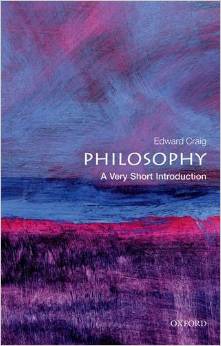Brian Moore’s Cold Heaven (1983) begs to be read alongside Graham Greene’s The End of the Affair (1951).
First, character. The heroines of both novels — Marie Davenport in Moore, Sarah Miles in Greene — are literary cousins. Both were baptized into the Roman church as infants but have no faith as adults; both turn from loveless marriages to passionate adulterous affairs; and both affairs are interrupted by a seemingly unrelated divine miracle. But the women are only cousins, not twins. Sarah’s dies long before the final pages of The End of the Affair, while Marie is still living at the end of Cold Heaven. More importantly, while Sarah is eventually caught up into the love of God, Marie manages to escape the ‘Hound of Heaven.’ Similar circumstances, different destinies.
Second, genre. Another quality shared by the two novels is their authors’ attempts to be “fair.” Greene and Moore know the pitfalls of hagiographic fiction, but their plots require the inclusion of the supernatural. By definition, novels have quotidian subject matter, and must be perceived as “realistic” if they are to avoid various perhaps undesirable sub-generic labels (magical realism, science fiction, etc.). The Catholic novel simpliciter is thus a tough row to hoe. One way to avoid merely “edifying” fiction is to incorporate immorality as a matter of course, and let it go unpunished (unless organically or naturally) and unremarked. Another way to avoid it is the invention of miracles or other spiritual phenomena that remain subject to alternative explanations. Whatever their reasoning — artistic or moral or something else — Greene and Moore both try not to play favorites with the audience. They leave open the possibility of naturalistic interpretations of “supernatural” phenomena. One of Moore’s characters, Father Ned, describes the dynamic in this way: “You know, Mrs Davenport, you still have the right to refuse. It’s basic to Christian theology that man is free to say no to God. Miracles and miraculous appearances are only signs which solicit belief. That’s all they are. Remember, the Church doesn’t require anyone to believe in miracles” (176). Apparently this is a principle of Catholic fiction as much as a principle of Catholic theology. But the deck is still stacked against disbelief. On the following page, Father Ned adds: “The Church doesn’t want you to do anything you don’t want to do. But perhaps our Lady does. That’s something else” (177). Although Cold Heaven feels more impartial than The End of the Affair, both ultimately land on the supernatural side. The spiritual interpretation simply has more and better evidence, especially since it comes from the perspectives of multiple characters. Alternative explanations (coincidence, hallucination, deception, freak of nature, etc.) seem inadequate to the data. (The same, for better or worse, must be said of Ron Hansen’s Mariette in Ecstasy).
Third, and accordingly, plot. A final link between the novels is the gradual but thrilling unfolding of mystery. A hired detective plays a minor role in The End of the Affair, and Cold Heaven features an amateur detective-priest. The unloosing of mental knots is a large part of the satisfaction of both books. Part One of Cold Heaven is positively gripping, as Moore’s story twists and turns at a breathless rate. And he writes very well, so it doesn’t read like a “pageturner”: one lingers over sentences. In Part Two, which introduces new characters and resolves puzzles much more quickly, the pace begins to flag. The two priests pale in comparison with every other character in the book (the advertising blurb on the back cover of the paperback is highly misleading about Father Ned). But the advent of the overweight jogger and the return of the nuns make for a satisfying final fifty pages.
These comparisons may be misleading. Greene and Moore are not at all the same kind of novelist in terms of language. Moore is frequently lyrical, and Greene, as Evelyn Waugh once observed, writes so sparsely that we can almost say he has no distinctive “style,” at all. Additionally The End of the Affair is narrated by a participant in the story, Maurice Bendrix, whose life is so wrapped up with Sarah’s that he becomes the main character. In Moore’s novel, on the other hand, an omniscient third-person narrator is free to move from one scene to another, with or without his protagonist, Marie. The End of the Affair is a story about the storyteller, and the consequences he suffers from knowing and loving a woman pursued relentlessly by God. But the woman herself is the locus of attention in Cold Heaven, while the men in her life suffer on the sidelines.
Source: https://www.penguinrandomhouse.com/books/329961/cold-heaven-by-brian-moore/9780452278677







